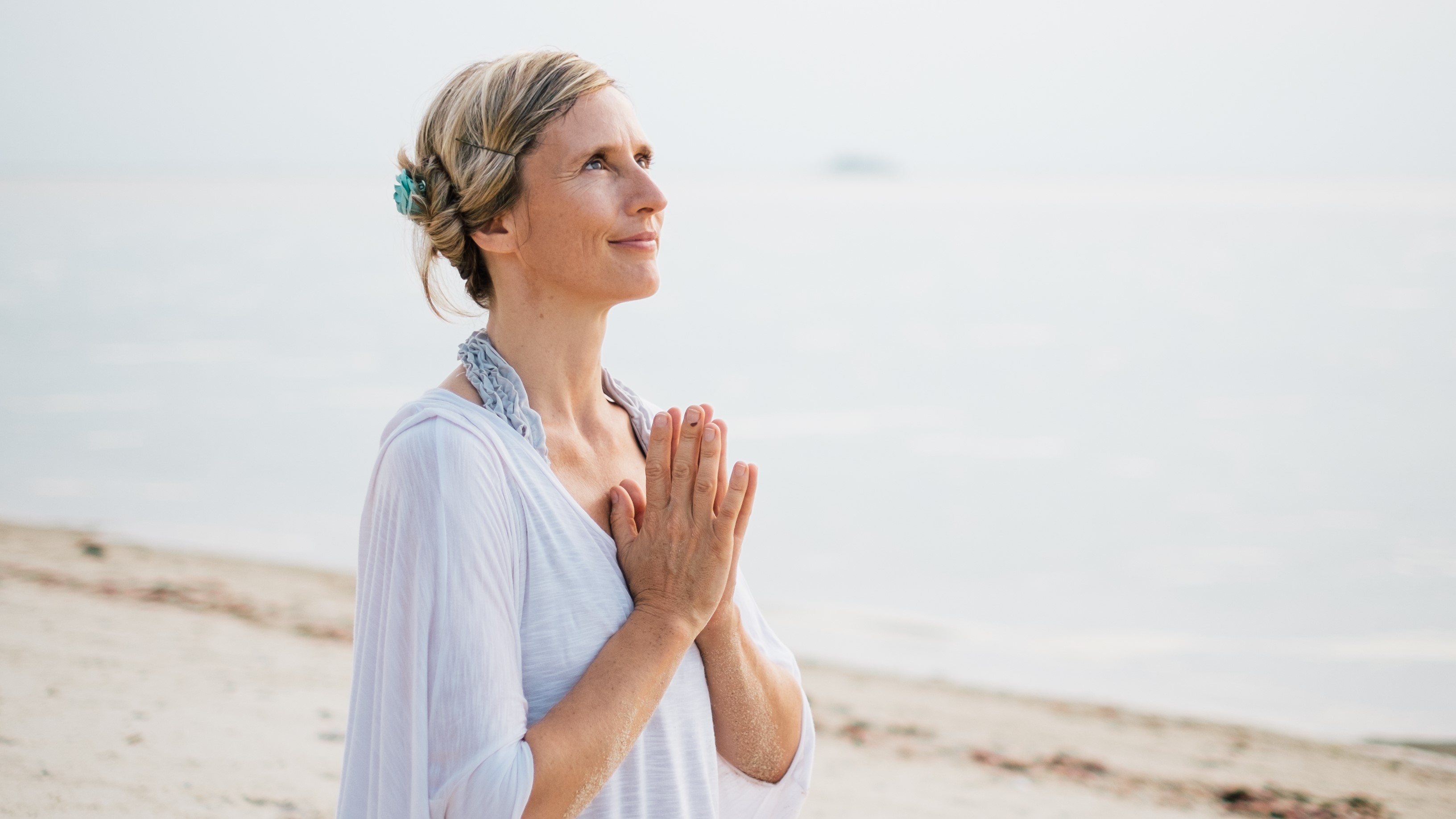
When you've got digestive issues, the last thing you want to do is go for a lengthy run or start doing some burpees. But doing regular, gentle exercise could alleviate your symptoms, particularly if you're suffering with constipation or IBS.
That's because exercise helps move food through your digestive tract, and it can also alleviate anxiety and stress—both of which can cause digestive problems.
If you're looking to do some low-intensity workouts, you might want to start with yoga. This stomach-focused routine from instructor Lorraine Taylor features four simple poses to try, which can be strung together to form a flow.
"This routine works on the abdominal area in many different ways. Stretching through up dog, squeezing through twisting lunge, side bending through the wide angle side fold and contracting through the wide angle balance. Plus, the transitions help to massage and bring more blood flow to this area," explains Taylor.
So grab your yoga mat, find a calm space then try this short routine.
1. Twisting Lunge
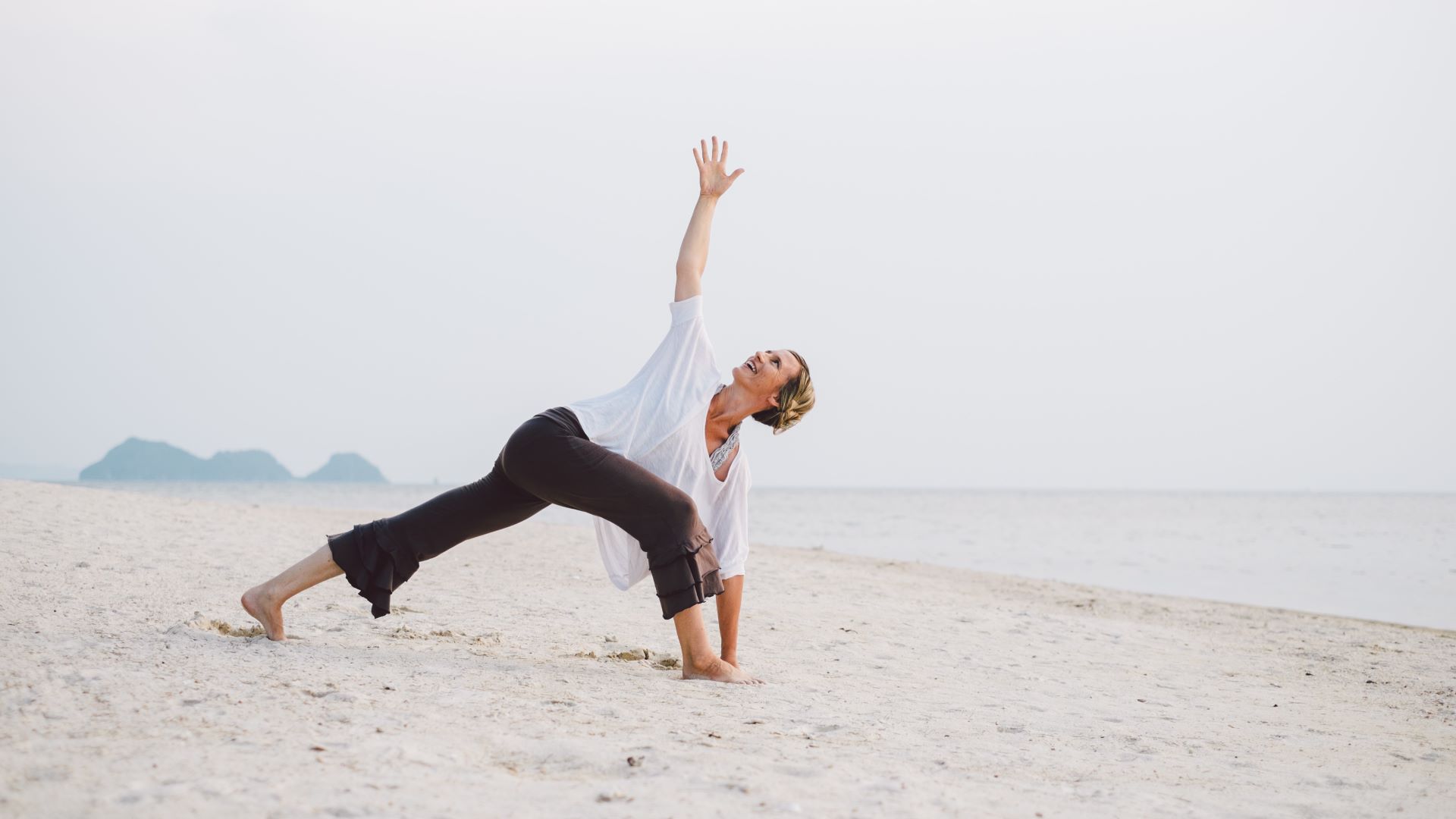
- Step your right leg forward, with your knee bent at a 90-degree angle. Place both hands on the floor on either side of the right foot. Keep the left leg straight behind you. If this isn't comfortable, drop the knee to the ground and put a cushion underneath.
- Lift your right hand to the sky. You should feel the spine twisting and the abdominal area being pressed. Breathe into the abdomen with slow, calm breaths while engaging the legs and reaching up to the sky. If you feel sturdy, look up to the right hand. Alternatively, keep looking down to the floor.
- Hold the posture for 5-10 long breaths then switch sides and repeat.
2. Upward Facing Dog
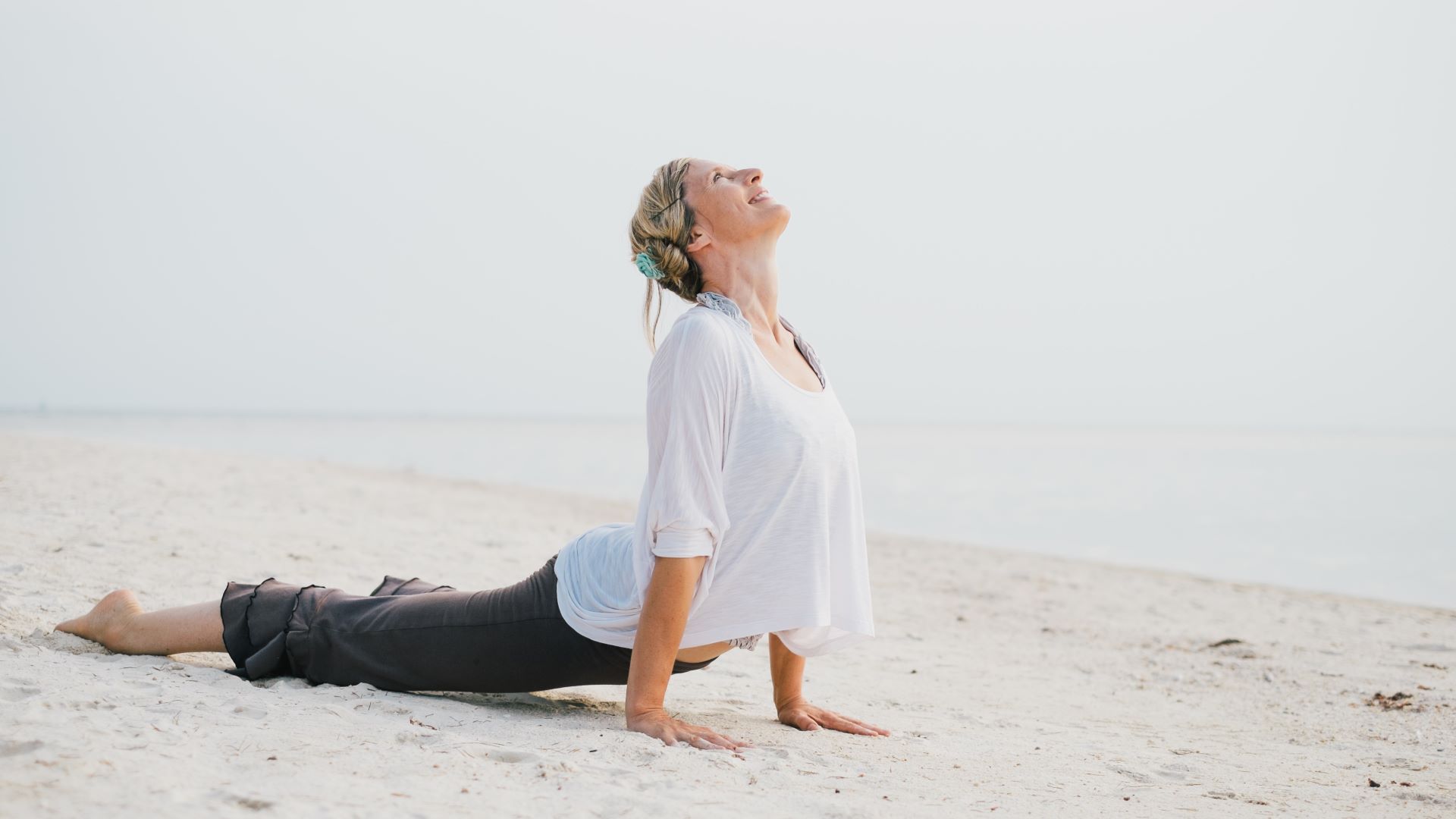
- To transition from the previous pose, move into a plank and lower your body to the ground. Lay here and breathe deeply into the belly a few times.
- Next, place your hands on either side of the rib cage and slowly start to raise your upper body. Your hands should be directly under your shoulders and your arms should be straight. If this is too intense, keep the arms slightly bent and do a shallower raise from the ground.
- Look up to the sky and lengthen the neck. Press your hands and feet down onto the floor. Feel the abdomen area stretching and the back strengthening. Stay for 5-10 slow breaths.
- To finish, lie down on your belly again and continue breathing deeply.
3. Wide Angle Side Fold
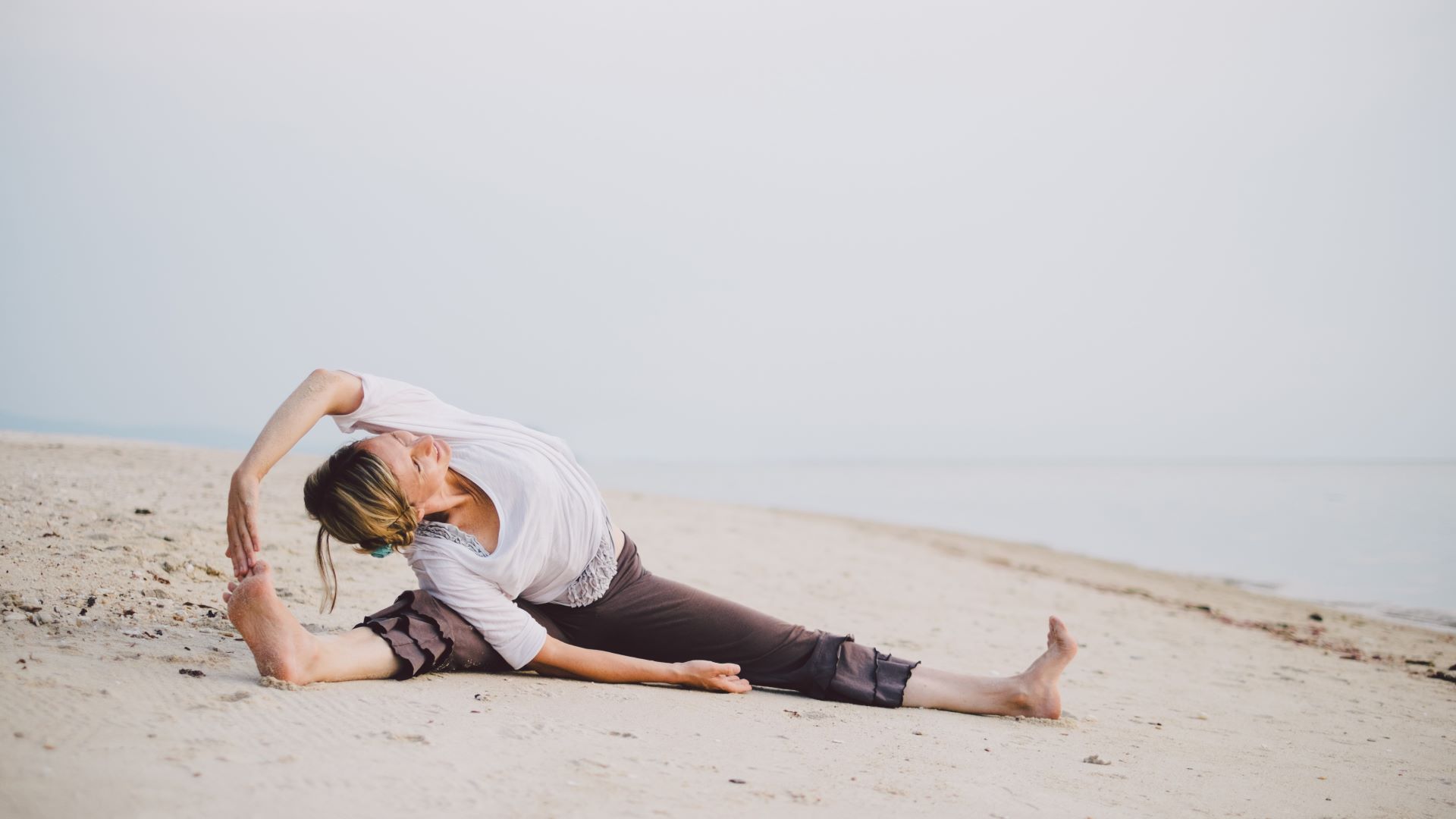
- To transition from the previous pose, press into your hands and come up onto your knees. Rest your forehead on the ground and keep your knees slightly apart behind you, so that you're doing a child's pose. After 5-10 breaths here move to an upright seated position with your legs in front of you.
- Open your legs as wide as you can, without widening them so much that you feel any strain. Lift up through the spine and bend to the right side of your body, placing your right hand on your right shin, ankle, or foot.
- Lift your left arm up into the air as high as you can and bend to the side so you can feel the left side of the body stretching. Look up to the sky and lengthen the neck.
- Take your left hand in the direction of the right foot and if possible take hold of the foot. If not possible, keep reaching the left hand towards the right foot, intensifying the stretch.
- Take 5-10 breaths and then return to the center and breathe five deep breaths. Repeat on the other side.
4. Wide Angle Balance
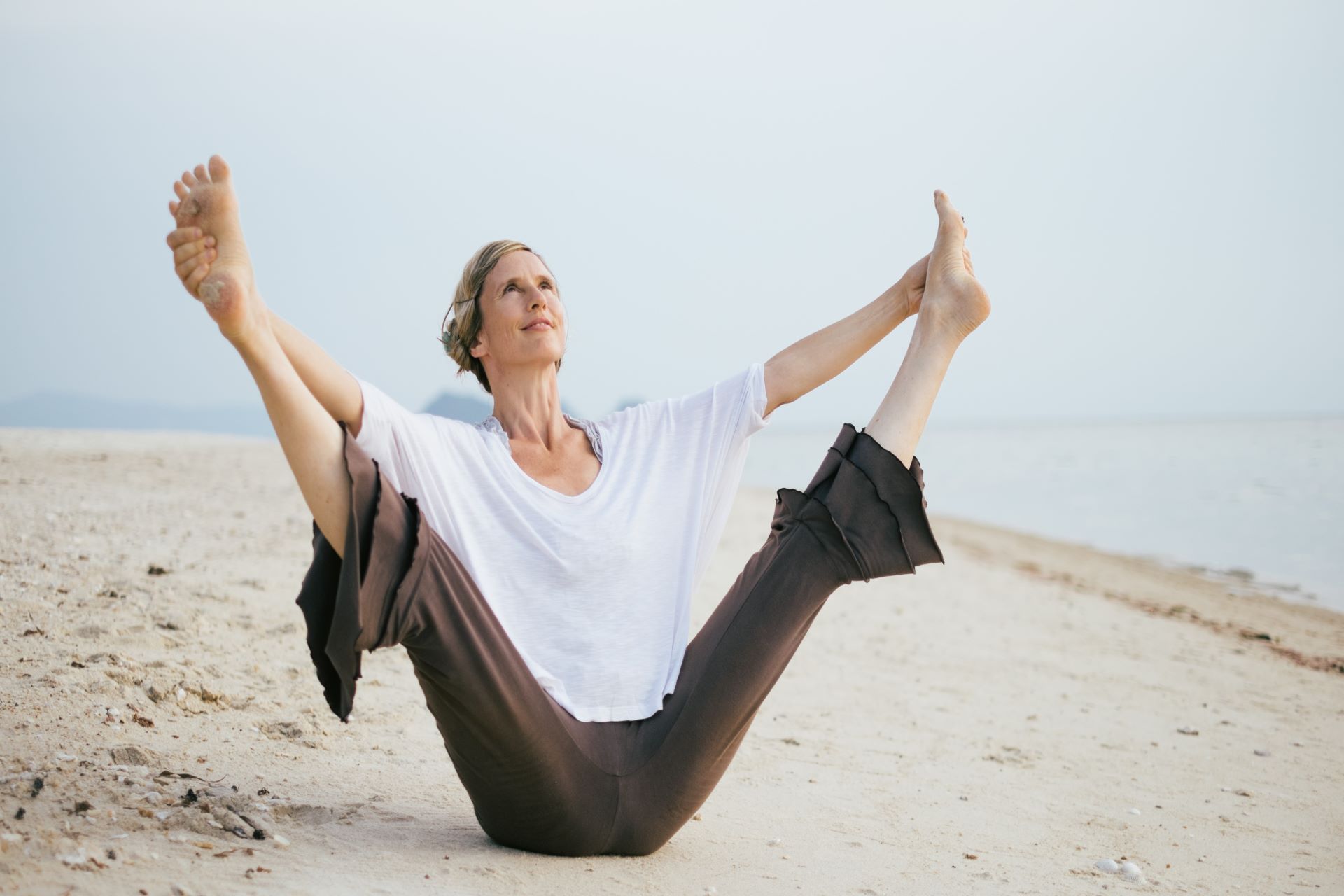
- To transition from the previous pose, draw the legs together and bend the knees, wrap your arms around your legs and relax your head down. Give yourself a big hug and squeeze the body.
- Next, still in a seated position, grab hold of the outside of your feet. Slowly shift your weight onto your buttocks and gently lift the feet a few centimeters off the ground, keeping your arms straight.
- Gradually lift your feet higher and higher, keeping your balance and your spine straight. Stop at the point that feels right for you and take 5-10 breaths.
- Next, lie down on your back for a few minutes, allowing your belly to relax fully and breathing softly into it. You can place your hands on the exact part of the abdomen that you would like to nurture and breathe slowly into that point.
- To finish, return to a seated position and bring your hands together at your heart, congratulating yourself for doing this yoga routine. End the sequence with your hands on your belly and send gratitude to that part of you.
Can yoga really help digestion?
Most research suggests that yoga can help with digestion. A 2021 study, published in the Journal of Bodywork and Movement Therapies, reported positive digestive outcomes in elderly study participants who undertook a regular yoga practice. And a 2020 narrative review in Digestive Diseases and Sciences concluded that a regular yoga practice could potentially ease IBS.
However, researchers have also noted that we need larger, better-quality studies to conclusively prove that it helps with digestion. It's always best to chat with your doctor before starting a new exercise regime.
Looking for more gentle exercise routines? Have a go at these yoga stretches for beginners or try this yoga flow for hips and back







